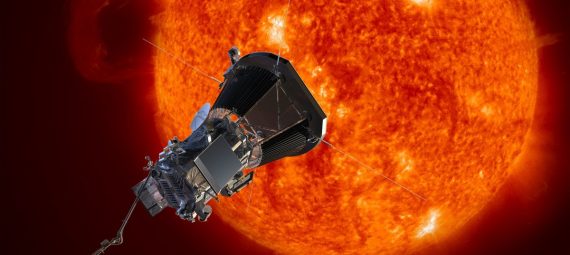With an objective of unearthing the mysteries around sun and device methodologies to protect the earth from these dangerous solar storms, the National Aeronautics and Space Administration (NASA) on Sunday, August 12, 2018, flagged off their historic mission leveraging their spacecraft worth 1.5 billion from Florida base of Cape Canaveral.
This spacecraft called the Parker Solar Probe will offer scientists an opportunity to explore the sun as never before. It has the ability to remain cool even in the hottest of the surrounding temperatures while penetrating 6 million kilometers of the sun’s surface. No wonder the scientists consider it to be the hottest as well as the coolest missions under the sun and also mentioned that no better day than Sunday is fit for its launch.
The idea or mission to get so close to the sun was on the mind of NASA ever since 1958. 91-year-old astrophysicist Eugene Parker was the one who had predicted in the same year that the Sun’s atmosphere was continually accelerating and expanding. Hence, with the objective of unveiling the many mysteries that surround this big star as well as the yellow dwarf star known to be 4.5 billion years old. As per Nicola Fox, project scientist of John Hopkins University, the dream, today seems to have come to a realization as NASA has been able to create a technology that can ditch the high temperatures of the sun. Besides, it is light and compact enough to travel at astounding speeds and withstand extreme temperature variations one it is near Venus.
Thomas Zurbuchen, mission chief added that it was the first time that a mission was named after a living person and no one other than Parker’s name was apt for the mission. As per him, the Sun was the most important star of the universe and by getting insight into the Sun and understanding its life saving and violent nature, we can protect our astronauts, satellites and ground-based power grids in a much better way. The only way to understand the sun was to go and touch-base it.
The Sun is around 150 million kilometers from the Earth. Parker Probe, the Delta IV Heavy Rocket is fast enough to reach to Philadelphia from Washington in a second. Nicola fox said that nothing of the speed had ever been sent before into space. Further, its frontal solar shield can withstand temperatures of over 2500 F. The shield of the spacecraft will protect the science instruments during its solar journey and critical junctures. The spacecraft is designed to meet its needs on its own like adjusting the shield to face the sun at the right time, correct itself if there is any sort of a tilt so as to avoid getting burnt. The communication lag is 16 minutes each away and hence it was important to make the aircraft ready to meet its requirements on its own as the John Hopkins flight controllers would be too far to help.
Today as the dream takes wings, the spacecraft is loaded with names of over a million people as well as the copy of Eugene Parkers historic paper on solar wind.
Know about Top Aerospace Engineering College in India

